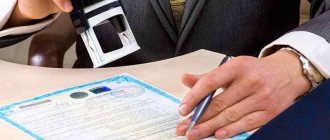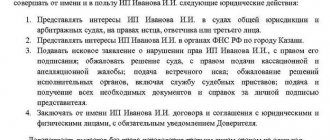As a rule, this term is used in legal science and practice devoted to intellectual rights. The definition of the term is given in Article 1229 of the Civil Code of the Russian Federation: it is “a citizen or legal entity that has an exclusive right to the result of intellectual activity or to a means of individualization.”
The Land Code and Part 1 of the Civil Code also speak about who the right holder is, which states that ownership of an object that has an owner can be acquired by another person on the basis of an agreement with the consent of the legal owner.
Who is the Beneficial Owner?
A beneficiary is an individual who participates in a legal entity. The size of this dominant participation is more than 25%. The same person has the authority to control the actions of the legal entity. The meaning of the concept under consideration depends on the specific area.
The following persons may be the beneficial owner:
- Landlords.
- Account holders.
- Clients of trust firms who have given away their property on a trust basis.
- Holders of documentary letters of credit.
- Real owners of companies.
Often information about the beneficial owner is hidden. This is done to ensure the safety of the company’s activities, as well as to prevent claims from government agencies.
How do companies record and disclose information about beneficiaries ?
Culprit or owner: The Supreme Court decided who was responsible for the accident
Andrey Simonov* gave his Toyota Avensis to his friend Yuri Malinin* for a while. He handed over the keys and documents, but they did not draw up any papers. On the evening of August 21, 2018, Malinin got into an accident in someone else’s foreign car - he drove into a car that was stopped at a traffic light. It was Stepan Mikhailov's Toyota RAV4*. The traffic police decided that it was Malinin who was to blame for the accident, since he did not maintain a safe distance between the cars. It turned out that Simonov's car was not insured. The person responsible for the accident did not voluntarily pay money for repairs to the victim, so Mikhailov first had to conduct an independent assessment of the damage and then go to court.
Who is responsible for the accident?
Initially, he filed a claim against Malinin, that is, the culprit of the accident, and asked to recover from him money for the restoration of the car (208,000 rubles), the cost of an independent examination (4,000 rubles), compensation for moral damages (50,000 rubles) and other expenses (for payment of state duties and postage). But then the plaintiff replaced the defendant with Simonov, the owner of the car. And the man who caused the collision was charged in the case as a third party. The first instance ordered a forensic examination in the case. According to her conclusion, repairing a Toyota RAV4 will cost 162,000 rubles. Then Mikhailov reduced the size of the demands; he wanted to receive a total of 199,000 rubles from the owner of the foreign car. (for repairs and loss of marketable value of the car).
The court determined the culprit of the accident at the intersection
The Slantsevsky City Court of the Leningrad Region decided that the damage caused in the accident by virtue of Art. 1064 of the Civil Code (“General grounds for liability for causing harm”) must be compensated by the person at fault for the collision. Simonov entrusted him with the car along with the keys and documents. Consequently, at the time of the accident, Malinin legally owned the car, so he should be responsible for the damage. And the first instance rejected the claim, since the defendant in the case was improper (case No. 2-42/2019).
But the appeal concluded that it is the owner of the car who must answer to the victim. According to the appeal, just handing over the keys is not enough - for legal ownership, Malinin lacked legal documentation of the transfer of the foreign car (power of attorney, lease agreement or other order). The court recovered from the owner of the car the cost of repairs (162,000 rubles), loss of marketable value of the car (8,800 rubles) and legal expenses (35,000 rubles). The cassation supported the arguments of the first instance. She canceled the appeal ruling, and left the decision of the Slantsevsky City Court of the Leningrad Region in force. Then Mikhailov appealed to the Supreme Court. In the cassation appeal, he indicated that the owner only gave the car for use, but did not transfer ownership, that is, Simonov should still be responsible for the accident.
Owner and owner. What is the difference?
Case No. 33-KG21-1-K3 was considered on April 26 by a trio of judges chaired by Elena Getman. Mikhailov himself and Simonov’s lawyer Tikhon Kolesnik came to the meeting at the Supreme Court. First, Mikhailov talked about how the accident happened: he was driving with his family in a car, stopped at a red light, and a few seconds later Malinin drove into him from behind. The presiding judge in the trial asked why he decided to change the defendant.
– At first I didn’t know who the owner was. I thought that he [Malinin] was the owner. When at the first court hearing it turned out that he was not the owner, the judge told me: “Just think about it, you must choose the defendant correctly.” And we [with the representative] decided to change the defendant,” explained the cassator.
– Did you consciously assume that the owner is the person who should be responsible? There are concepts of legal owner and owner. They may not coincide,” Getman noted.
Car sharing accidents: what you need to know
Mikhailov explained his position: the one to whom the car was transferred can become the legal owner. But for this he must, for example, insure his car. Or the owner and driver must enter into an agreement and draw up a power of attorney. “That is, written evidence of the transfer,” Getman noted.
– Does the transfer of a car, which occurs by verbal agreement, turn the driver into the legal owner? “No,” Mikhailov stated unequivocally.
Then questions arose from Supreme Court Judge Vyacheslav Gorshkov. He asked who, in the opinion of the cassator, should pay for damages from an accident if the car was stolen. “The one who committed the accident,” Mikhailov answered.
- What's the difference? – asked Gorshkov.
– The owner is not to blame; the car was stolen without his will.
Kolesnik retorted that at the time of the accident, Malinin, and not his client, owned the car. “How can we conclude that a person has been given the power not to use, but to own?” – Gorshkov asked this question to Simonov’s representative. He said that if someone else drives the car, then he becomes its owner.
The Supreme Court exempted the owner of a rented car from a fine
Gorshkov asked whether the victim was eventually compensated for the damage or not. Mikhailov said that after the decision of the regional court, he turned to the bailiffs, they managed to collect 13,000 rubles, and after that the cassation overturned the appeal decision. The victim in the accident indicated that several years had passed since the collision. During this time, he spent money on a representative and an examination, but was never able to return the cost of repairs. “And this is what I’m to blame for?!” - Mikhailov was indignant.
After this, the trio retired to the conference room. Half an hour later, Gorshkov announced the board’s decision: to cancel the cassation ruling and return the case to the Third Cassation Court of General Jurisdiction.
Claim against both defendants
Alexey Tyo, Deputy Head of the BA Bureau of Lawyers "De Jure" Bureau of Lawyers "De Jure" Federal rating. group Arbitration proceedings (medium and small disputes - mid market) group Dispute resolution in courts of general jurisdiction group Bankruptcy (including disputes) group Insurance law group Criminal law group Tax consulting and disputes (Tax disputes) group Family and inheritance law group Financial/Banking law Land Law/Commercial Real Estate/Construction group 12th place By number of lawyers 14th place By revenue 19th place By revenue per lawyer (more than 30 lawyers) The company profile sees in the case a strategic mistake by the plaintiff himself and his representative. In such cases, the expert says, it is necessary to bring a claim against both defendants - both the owner of the car and the person who directly caused the harm. Cho believes that perhaps the first instance made a mistake, which, by virtue of clause 3 of Art. 40 of the Code of Civil Procedure (“Participation in the case of several plaintiffs or defendants”) could involve the culprit of the accident as a co-defendant on his own initiative.
The courts of the first and cassation instances, having considered that the legal owner of the car is the driver, obviously did not take into account the lack of any legal registration of the fact of transfer of rights to the car. At a minimum, such confirmation could be the MTPL policy issued to Yuri Malinin*.
Alexey Tyo, Deputy Head of BA De jure
Akim Lozhkova, lawyer at AK Borodin and Partners Borodin and Partners Federal Rating, agreed with his colleague’s position. group Dispute resolution in courts of general jurisdiction group Criminal law. In his opinion, in such cases it is necessary to take into account the behavior of the owner of the car before handing it over to the immediate culprit, written documentation of such relationships, communication and correspondence between them. Cho continued that the Supreme Court considered a similar dispute last year (case No. 78-KG20-18). Then the owner of the car allowed a person without a license and not included in the insurance to drive. The courts rejected the claim against the owner of the car. But the SC pointed out that it was necessary to find out whether his behavior in handing over the car was prudent and responsible.
*The names and surnames of the participants in the dispute have been changed by the editors.
- Anastasia Sinchenkova
The legislative framework
The term “beneficiary” is given in Federal Law No. 115 (paragraph 13, article 3). This law regulates the area of combating money laundering. Federal Law No. 115 obliges financial institutions to identify beneficial owners. The criteria for identifying them are also given there. The amendment to the Federal Law is given in Law No. 215. The regulation contains nuances for the publication of relevant information of legal entities. The Federal Law obliges legal entities to enter information about beneficiaries into databases. Information must be updated once a year.
Does the non-profit organization have a beneficial owner ?
Determining beneficiaries allows you to increase the “transparency” of the work of companies and prevent the laundering of proceeds from crime. Relations with these persons are regulated by Central Bank Regulation No. 499. This Regulation contains the following information:
- Criteria for identifying beneficiaries.
- List of documents for identifying hidden owners.
- Rules for maintaining dossiers.
- Other items.
Additional information is disclosed in letters from the Central Bank. These letters contain various explanations and analysis of exceptional cases.
How to determine a beneficiary
Beneficiaries can be either one or several actual owners of the company. A distinctive feature of such owners is the possibility of varying degrees of influence on the company’s activities. Beneficiaries are usually difficult to identify. The fact is that information about such owners may not appear in the company’s documents at all. Also, information about the owners may be contained in official documents, but the degree of their participation may be underestimated. The lack of information about beneficiaries may be due to these reasons:
- Availability of offshore companies.
- Tax evasion.
- Legalization of money obtained from crime (laundering).
Various schemes are used to hide beneficiaries. To identify hidden owners, you need to know all these schemes. As a rule, to conceal information, a special method of registering property and title documents is used. For example, a person gains access to the company’s accounts by proxy. The power of attorney is provided by the “front” manager. As a result, the beneficiary is effectively given ownership of the bearer shares. Instead of a “dummy” director, nominee owners of securities may appear.
IMPORTANT! There is also the term "ultimate beneficiary". What does it mean? In the process of identifying the actual owners, a chain of beneficiaries is identified. This chain ends with the main recipient of the benefit - the final beneficiary. This is the person who receives income from the work of the company.
What rights do they have?
The car owner is responsible for all actions related to receiving insurance compensation in the event of an accident.
Attention! In the event of an accident, a citizen who purchased car insurance from the insurance company can no longer decide anything unless, of course, he has a power of attorney from the owner to represent his interests.
The process of restoring damaged property is based on the actions of the person who owns the property.
The rights of these two persons can be divided as follows:
- Policyholder.
- The Company has the right to make adjustments to the list of drivers allowed to drive this vehicle.
- Make necessary adjustments when changing owners.
- Can renew the insurance contract throughout the year.
- May, without agreement with the owner, terminate the insurance contract and receive the unused portion of the paid insurance premium.
- The person who has concluded the contract can make changes to it regarding technical parameters (replacing the VIN code, etc.).
- It can also make adjustments regarding the stated operating conditions.
- Owner.
- Draws up and submits an application to the insurance company about the occurrence of an insured event.
- Decides on the type and amount of compensation for damage caused.
- The property owner receives money to compensate for the damage.
- Can make claims to the insurance company regarding the amount of compensation and the quality of the repairs performed.
- Must be familiar with the insurance act and other documents in the insurance company.
If the owner of the car and the person who entered into the transaction are the same person, then this kind of division becomes, as you understand, irrelevant.
But if the owner of the car and the policyholder are different people, then these positions must be taken into account when concluding an auto liability contract.
Who needs information about beneficial owners
Information is requested to combat the following offences:
- Legalization of money acquired illegally.
- Financing of terrorist structures and criminal groups.
- Illegal withdrawal of money to foreign accounts.
Information may also be requested by private legal entities. For example, these could be financial institutions that provide loans. To issue a loan, the institution requests information about the beneficiaries. This information allows you to assess the company’s reputation and also analyze lending risks. Financial companies, in turn, provide relevant information to Rosfinmonitoring. Financial companies mean the following entities:
- Representatives of the securities market.
- Insurance organizations.
- Pawnshops.
- Leasing companies.
- Credit institutions.
Information about beneficiaries should be transferred to the following structures:
- Authorized bodies.
- Tax structures.
- Federal divisions of the executive branch.
- Various state and municipal structures.
- Commercial firms associated with government agencies.
If firms refuse to provide the required information, they are subject to a fine. Beneficial owner information is requested when concluding contracts related to public procurement. In response to the request, the company must send a document that includes information about the owners, including individuals who are considered founders.
Main difference
The difference between the owner and the policyholder is as follows:
- The policyholder is a person who purchases an insurance product from an insurance company and pays a premium under a motor vehicle liability contract, but in the event of an accident, the owner of the car receives the right to receive an insurance payment. And also this person does not have the right to dispose of this property (if he does not have a notarized power of attorney from the owner).
- The owner of the car is the owner of this property , but does not have the right to make any adjustments to the insurance document or terminate it.
In other words, the person who entered into a transaction with is the owner of the insurance contract, and the owner is the owner of the car. The owner of the car and the person who entered into the insurance transaction can be the same person.
In conclusion, I would like to touch upon the topic of unfair claims against the insurance company. Very often there are situations when people try to induce insurers to engage in illegal actions. Sometimes his relatives or third parties try to represent the interests of the person who provided the insurance.
Even if a person has an insurance policy, the insurer does not have the right to include him in the insurance as a driver without the permission of the policyholder.
Beneficiary Rights
The beneficial owner receives rights only if the relationship with them is formalized. Let's consider the rights of beneficiaries:
- Disposal of your share in the company. For example, a person can sell his share.
- Control over the performance of duties by the head of the company.
- Appointment and dismissal of the general director.
- Participation in various meetings: joint-stock, constituent.
- Receiving profit from the company's work in the amount of dividends.
The exact list of rights depends on the specific area in which the beneficial owner operates.
Protection of beneficiary rights
The rights of the beneficial owner are often violated. Let's look at the most common offenses:
- Failure to comply with previously reached agreements.
- Reducing the possibility of control over the activities of the company.
- Restriction of access to information about the actual state of affairs.
- Limitation of the ability to earn income.
IMPORTANT! To prevent violation of rights, it is recommended to formalize agreements in writing. The contract must contain provisions establishing control over the organization. They can include clauses on the need for non-disclosure of information, compensation for damage from unlawful or unprofessional actions.
Can a company exist without beneficiaries?
Companies that do not include beneficial owners are generally non-profit entities. That is, the purpose of their activities is not to make a profit. If it is a commercial entity, there will always be individuals who are the ultimate beneficiaries of the income. However, it is often almost impossible to determine the ultimate beneficiary.
FOR YOUR INFORMATION! Although government agencies attempt to identify the beneficial owner, it is rarely possible to obtain all the necessary information. This is due to the fact that there is an unlimited number of schemes that serve to hide the identity of the beneficiary.
Are these faces different or always the same?
Very often, our motorists confuse two concepts - the owner of the car and the policyholder . Many also wonder whether it is possible to complete a civil liability insurance transaction without the participation of the car owner. It is generally accepted that such a transaction is concluded by the insurance company only in the presence of the owner of the car.
But this opinion is fundamentally wrong. The owner of the car and the person with whom the insurance company enters into a contract may be the same person, or they may be different persons.
There are different columns in the contract form for the owner of the car and for the person concluding an insurance contract with the insurance company .
And this, in turn, means that another person can draw up an agreement with the insurance company, without the presence of the owner.
Who can be an insured under MTPL?
The person concluding an agreement with the insurance company can be absolutely any of the drivers who has the right to drive this car, i.e. included in the insurance. The presence of the owner of the car when drawing up the contract is not at all necessary , but his name will need to be included in the civil liability contract.
The one who pays the fee for concluding this auto liability agreement becomes the insured.
IMPORTANT. The person for whom this contract is drawn up must be entered in the driver column.
A person who has entered into an insurance contract is also covered by insurance in the event of an accident.
It is not necessary for a person who owns a vehicle to sign up for an auto liability policy as a driver.
It should be taken into account that all subsequent adjustments to the car insurance policy will be made only by the policyholder ; in this case, the car owner will not be able to do this. Those. If you need to add another driver to your insurance, then it is not the owner of the car, but the policyholder, who should go to the insurance company.
When applying for insurance, a person who is not the owner of the car must have a power of attorney from the owner; such a document will also be needed to make subsequent changes.
You can take out insurance not for the owner of the car even if the policy is issued electronically (you can read about electronic policies here).
Role in issuing a policy
One of the parties to the transaction is the policyholder, and the second party is the insurance company.
It is the policyholder (or the person to whom a power of attorney was issued on behalf of the policyholder) who has the right to amend the contract and terminate it (we wrote about the nuances of early termination of the contract here).
The owner of the car, in respect of which an agreement was concluded between the policyholder and the insurance company, does not have such powers, despite the fact that the car is owned by this citizen.
Yes, the car owner’s details are also indicated on the OSAGO form , but the insurance itself belongs to the policyholder, since he paid for it (we talked about why this insurance is needed here).










